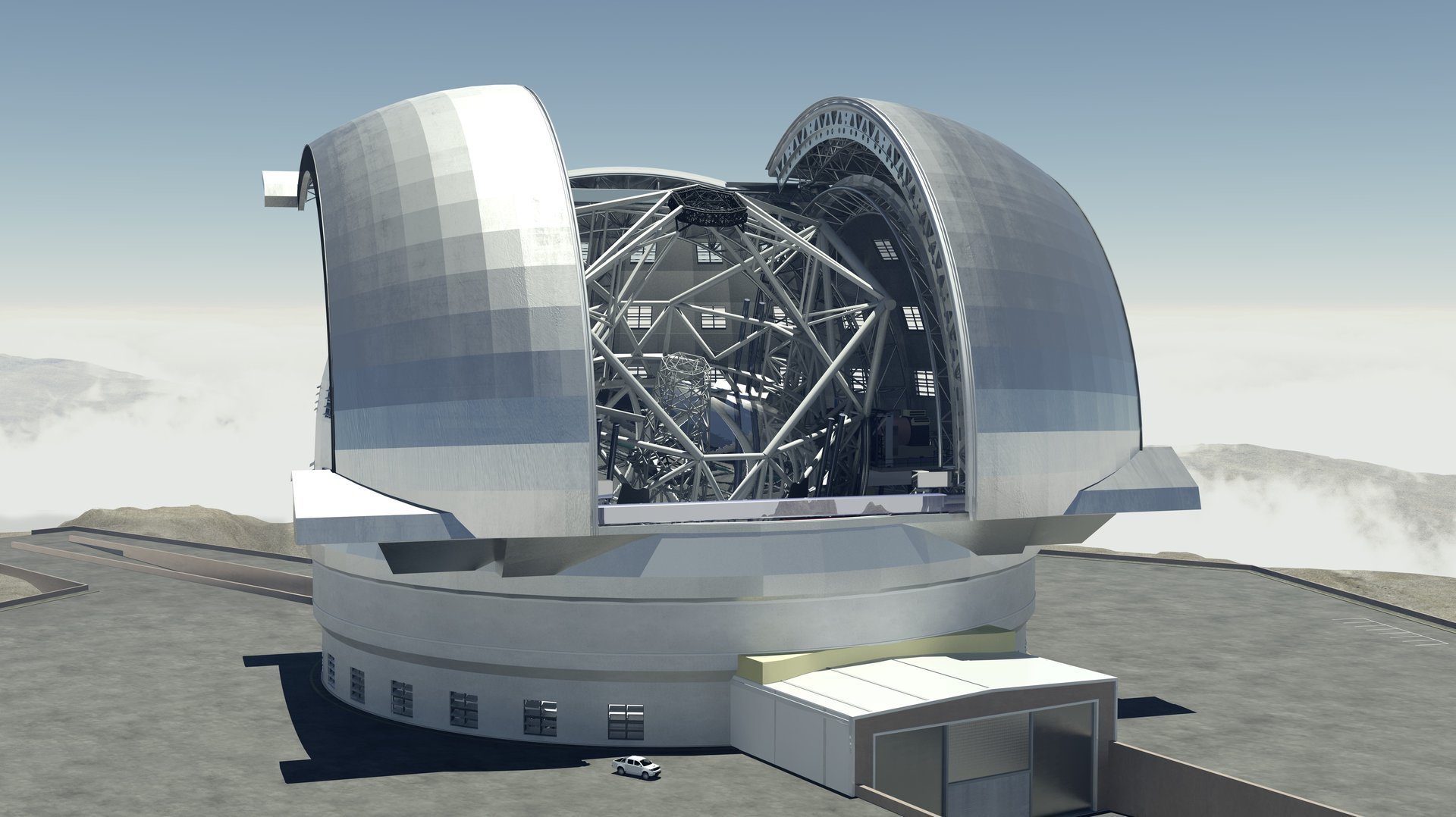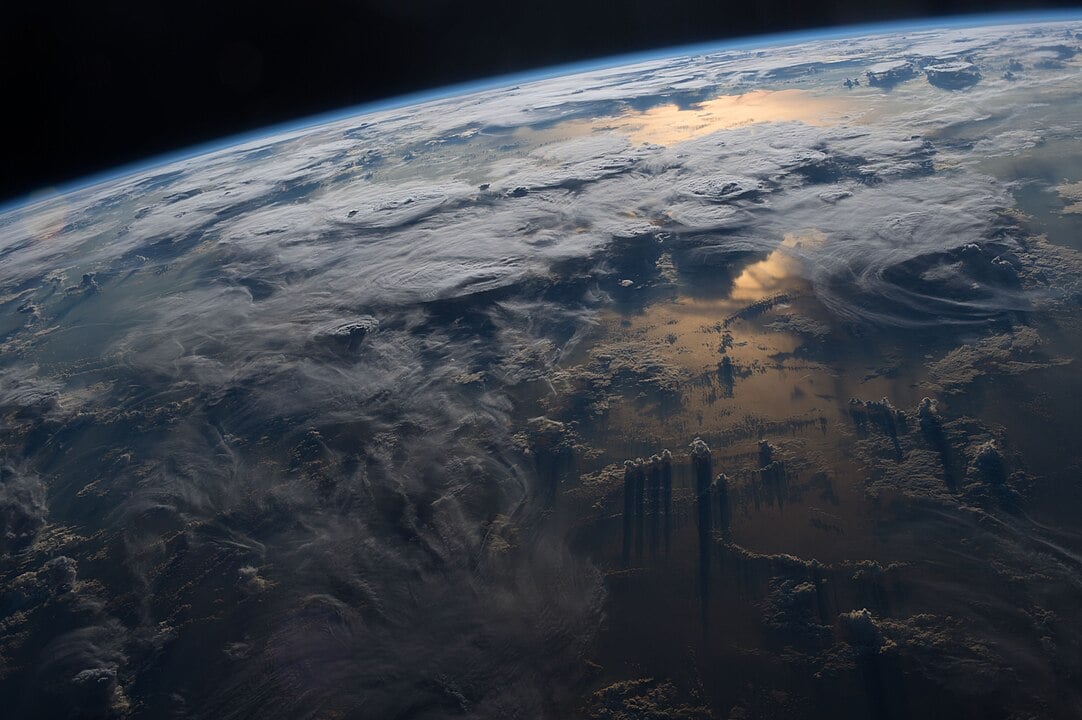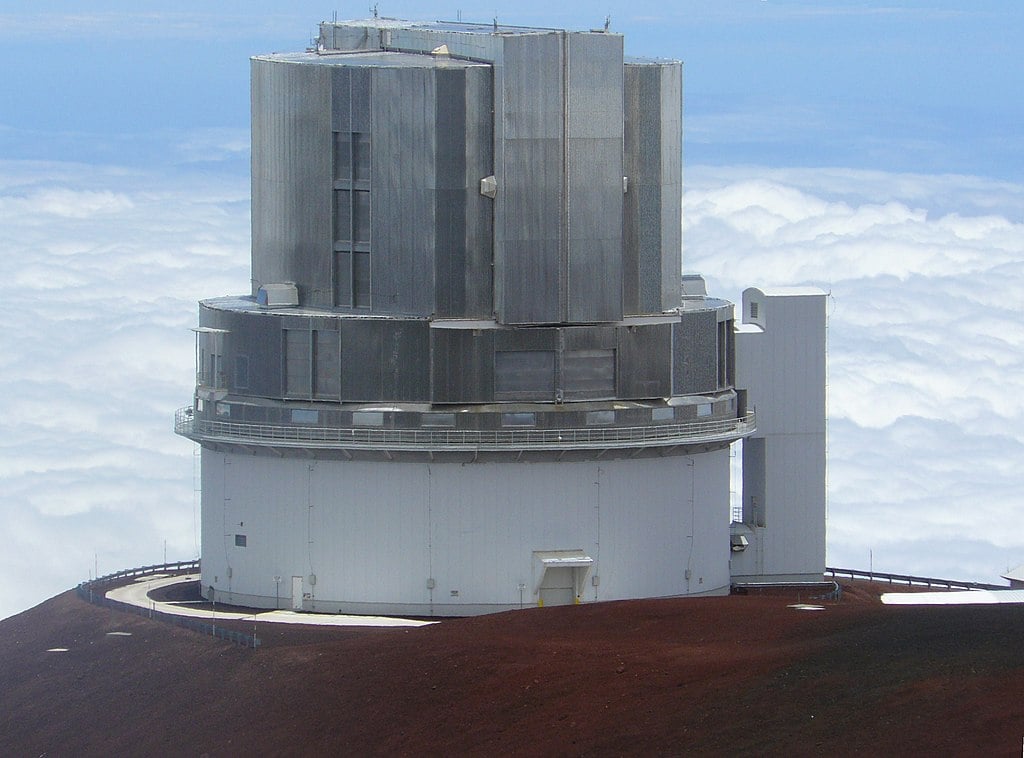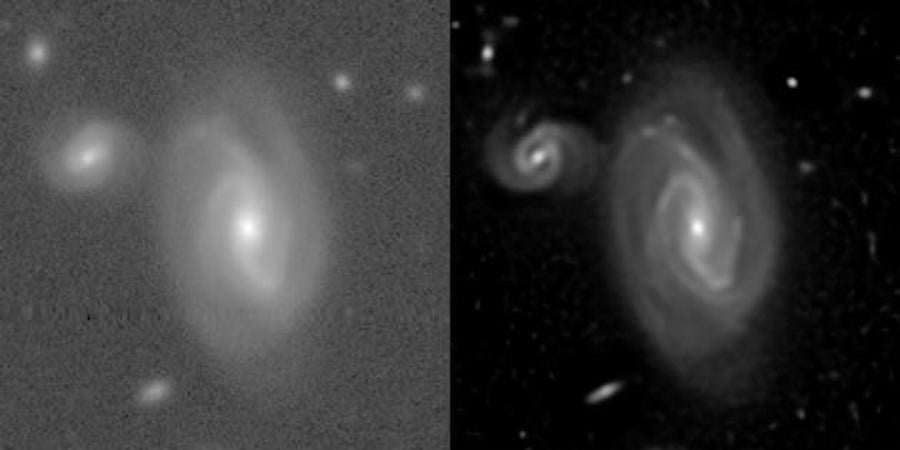Ground-based telescopes have a fundamental problem that no amount of engineering can fix. They’re trying to observe the universe through Earth’s atmosphere, a constantly moving blanket of air that distorts and blurs incoming light. It’s a little like trying to take a photograph of the bottom of a stream where the water is gently flowing! Space telescopes like Hubble easily sidestep this issue by operating above the atmosphere, but they can only photograph tiny slivers of sky. Now, researchers at Johns Hopkins University have developed a clever mathematical solution that could give ground based telescopes near space quality vision whilst retaining their ability to survey vast swathes of space!
 Artist impression of the Extremely Large Telescope. Ground based telescopes like this have to peer through our turbulent atmosphere (Credit : Swinburne Astronomy Productions)
Artist impression of the Extremely Large Telescope. Ground based telescopes like this have to peer through our turbulent atmosphere (Credit : Swinburne Astronomy Productions)
Earth’s atmosphere is never still. Temperature variations, changing pressure, and other atmospheric conditions cause light from distant stars and galaxies to refract differently as it passes through different layers. For bright objects, this might create twinkling stars but for the fainter targets it creates a significant problem. Traditional image processing techniques have struggled to handle these distortions without either blurring important details or introducing artificial graininess into the final image.
As a keen astronomical imager myself, the prospect is tantalising. With a whole bunch of algorithms already at my finger tips to tweak and improve images, the idea of a revolutionary new one is exciting. Called ImageMM, the new algorithm uses sophisticated mathematical techniques to look through the atmospheric turbulence and reconstruct what the sky actually looks like behind all that interference. Tamás Budavári, an astronomer and mathematician who led the research, explains that sharpening our view doesn’t just give us prettier pictures. It allows telescopes to detect fainter, more distant objects and pushes the boundaries of what’s observable from Earth’s surface.
 The atmosphere is essential for life on Earth but a real problem for astronomical imaging (Credit : NASA/Jeff Williams)
The atmosphere is essential for life on Earth but a real problem for astronomical imaging (Credit : NASA/Jeff Williams)
ImageMM takes a different approach by modelling how light travels through the constantly shifting atmospheric layers. Yashil Sukurdeep, the Johns Hopkins mathematician who developed the algorithm, describes it as learning to see past a restless sheer curtain to reveal the sharp, clear image hidden behind it. The method relies on a mathematical technique called Majorization-Minimization, adapted specifically for astronomical applications.
Early tests using data from the Subaru Telescope in Hawaii demonstrated the algorithm’s capabilities dramatically. The system processed blurry, noisy images in mere seconds, revealing intricate details like the spiral structure of distant galaxies with unprecedented clarity. What makes ImageMM particularly valuable is its ability to handle the imperfections that plague real observational data. Unlike existing tools, it effectively removes noise and blur whilst dealing with missing pixel values that commonly occur during observations. Sukurdeep notes that whilst astronomers will never have perfect ground truth to compare against, this approach represents the closest thing to a perfect reconstruction currently achievable.
 The Subaru Telescope on Mauna Kea, Hawaii (Credit : Denys)
The Subaru Telescope on Mauna Kea, Hawaii (Credit : Denys)
The timing couldn’t be better. The Rubin Observatory that has already started collecting test data will later this year, begin to conduct extensive surveys aimed at understanding dark energy and dark matter. For these studies, accurately measuring the shapes of distant galaxies and detecting subtle distortions caused by gravitational effects is crucial. Even small improvements in image quality from billion dollar observatories translate to substantial scientific gains.
It’s fair to say that space telescopes excel at capturing deep, high-resolution images, but they observe only tiny portions of the sky. Over 34 years, Hubble has photographed roughly 0.1% of the observable sky. Ground-based facilities like Rubin will image the entire visible sky every few days. With ImageMM processing those hundreds of observations, astronomers may finally achieve something close to space telescope quality whilst maintaining the comprehensive sky coverage only ground based instruments can provide and, at a fraction of the cost.
Source : Sharper than ever: New algorithm brings the stars into greater focus

